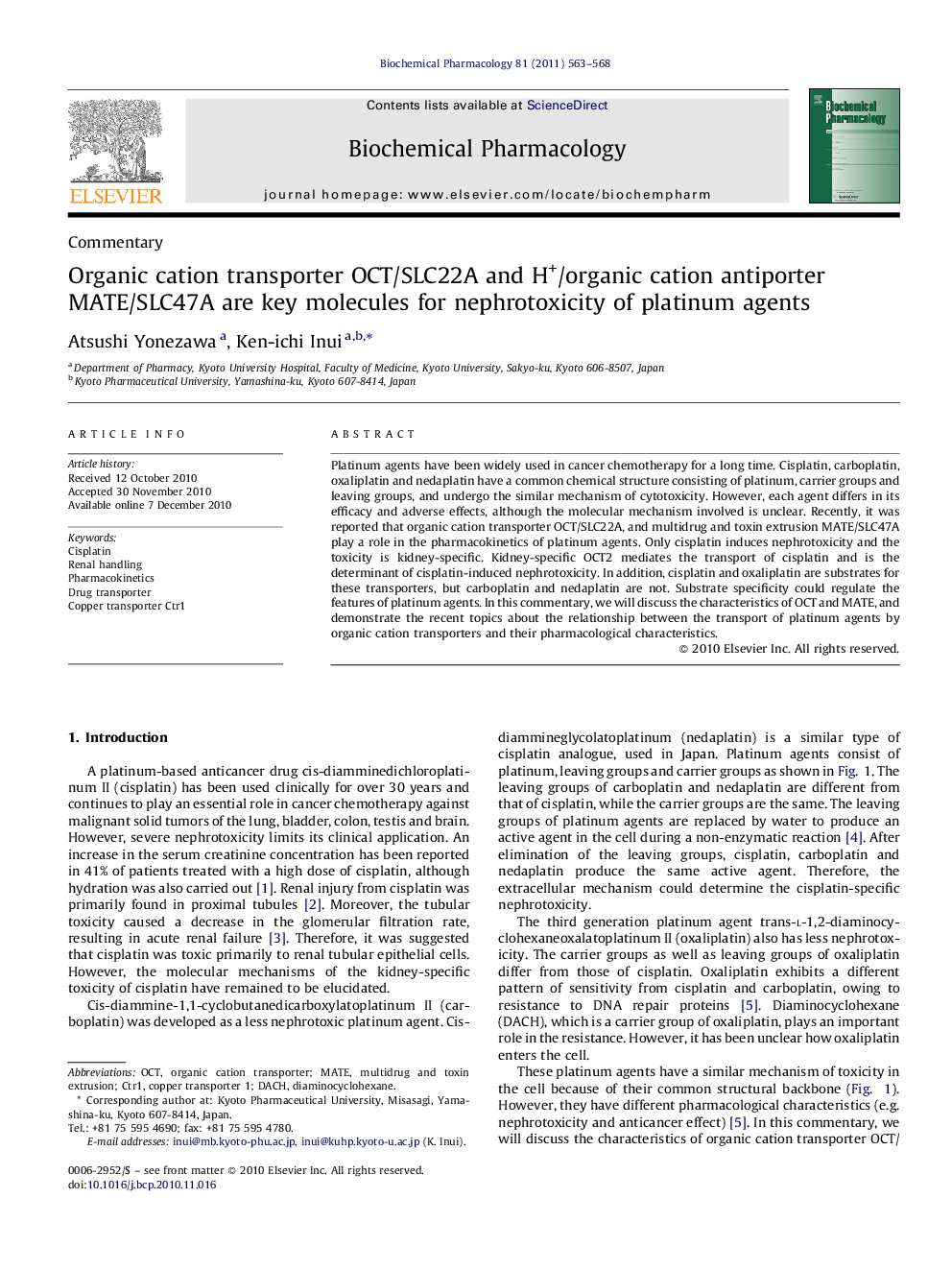| کد مقاله | کد نشریه | سال انتشار | مقاله انگلیسی | نسخه تمام متن |
|---|---|---|---|---|
| 2514179 | 1118454 | 2011 | 6 صفحه PDF | دانلود رایگان |

Platinum agents have been widely used in cancer chemotherapy for a long time. Cisplatin, carboplatin, oxaliplatin and nedaplatin have a common chemical structure consisting of platinum, carrier groups and leaving groups, and undergo the similar mechanism of cytotoxicity. However, each agent differs in its efficacy and adverse effects, although the molecular mechanism involved is unclear. Recently, it was reported that organic cation transporter OCT/SLC22A, and multidrug and toxin extrusion MATE/SLC47A play a role in the pharmacokinetics of platinum agents. Only cisplatin induces nephrotoxicity and the toxicity is kidney-specific. Kidney-specific OCT2 mediates the transport of cisplatin and is the determinant of cisplatin-induced nephrotoxicity. In addition, cisplatin and oxaliplatin are substrates for these transporters, but carboplatin and nedaplatin are not. Substrate specificity could regulate the features of platinum agents. In this commentary, we will discuss the characteristics of OCT and MATE, and demonstrate the recent topics about the relationship between the transport of platinum agents by organic cation transporters and their pharmacological characteristics.
OCT2 is the determinant of cisplatin-induced nephrotoxicity. Cisplatin and oxaliplatin are substrates for OCT and MATE, but carboplatin and nedaplatin are not. Substrate specificity regulates the features of platinum agents.Figure optionsDownload as PowerPoint slide
Journal: Biochemical Pharmacology - Volume 81, Issue 5, 1 March 2011, Pages 563–568